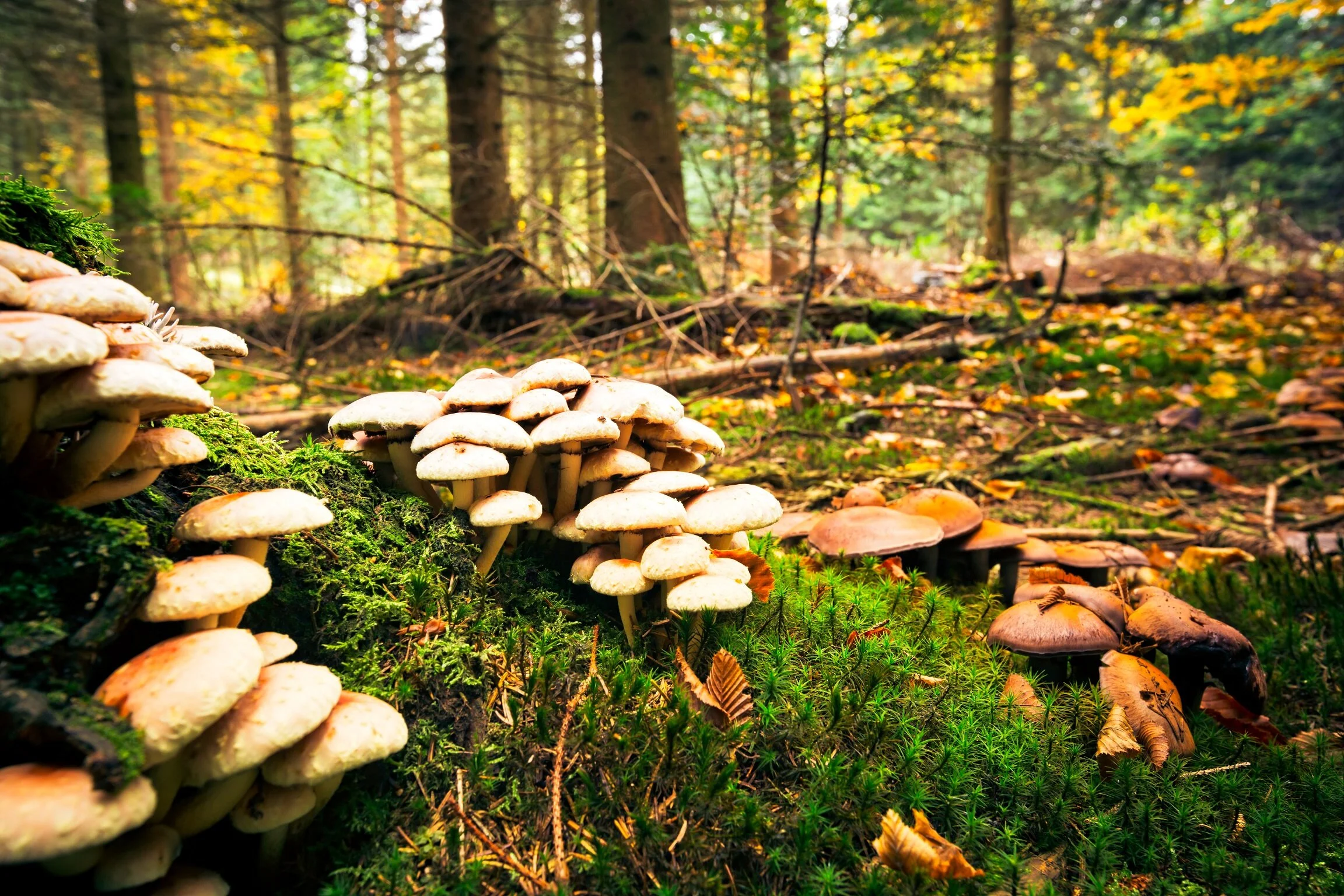By Alan Gange - Professor of Microbial Ecology, Royal Holloway
Two plants of the same species grow side by side. One is attacked by insects, one not. On an individual plant, some leaves get eaten, some not. This doesn’t happen at random, but is caused by the fungi that live within the leaves and roots of the plant.
Image Credit: nullplus via Shutterstock - HDR tune by Universal-Sci
Imagine you are holding a shoot of the dahlia plant, pictured below. How many species do you have in your hand? The answer is most certainly not one, but probably somewhere between 20 and 30. This is because every plant has fungi and bacteria that live on its surface (called epiphytes) and within its tissues (called endophytes).
If the stem is still attached to its roots then the number of species would easily double. The roots contain lots of endophytes and a separate group of fungi, called mycorrhizas. These fungi grow into plant roots and form a symbiotic relationship in which the fungus donates nutrients (principally phosphate and nitrate) to the plant, in return for a supply of carbon.
There has been a recent surge of interest in these fungi, as their presence can affect the growth of insects that attack plants. Research at Royal Holloway has shown that mycorrhizal fungi reduce the growth of many insects, by increasing the plant’s chemical defences. Our most recent work shows that endophyte fungi, the ones that live within plant tissue, can also cause plants to produce novel chemicals.
Dahlia is full of fungi (Image Credit: Png Studio Photography via Shutterstock - HDR tune by Universal-Sci
So both endophytes and mycorrhizas can be thought of as plant bodyguards, where both partners benefit from the association. The fungi gain refuge and resources, while the plant gains a natural pest protection system. The challenge is to exploit this natural system in agriculture and horticulture. However, these sorts of fungi are rare in crop plants thanks to years of fungicides, fertilisers and plant breeding, and modern crops have far fewer natural fungal partners than their counterparts in the wild
Plants can choose their fungal partners
In a wildflower meadow, many plants grow in close proximity but these plants can have entirely different fungal bodyguards. Although the plants grow in the same conditions, with the same spores floating around, they appear to select which fungi colonise their tissues.
Perhaps more intriguing is that different fungi exert different effects on insects, a phenomenon called “ecological specificity”. In nature, plants seem to select the fungi that will provide them with maximum benefit. If we’re to use this in agriculture, the challenge is to find the “right” combinations of fungi that will provide crops with protection against pests and diseases.
There is a separate group of fungi, called entomopathogens, that kill insects. These fungi can also live within plant tissues, meaning that if an insect eats an infected leaf, it ingests a killer fungus. There is evidence that plants particularly allow these most beneficial of bodyguards to colonise their tissues extensively – more so than other tissue-dwelling fungi.
The fungal internet
The chemicals produced by all of these fungi travel throughout the plant. Some fungi in the root can change the host plant’s chemistry to keep leaf-feeding insects largely at bay, which may well be one reason why cultivating a rich soil full of useful microbes can lead to reduced pest problems above ground.
Other mycorrhiza (root) fungi can change the chemical makeup of a plant’s leaves, and we have found that these chemicals can attract parasitoid insects to give another level of defence – they can reduce insect growth by making leaves less edible, while simultaneously helping the plant to call parasitic insects that attack the herbivores.
Perhaps even more exciting is the discovery that networks of fungi in the soil can link many plants together. The mushrooms you see above ground are simply the fruiting bodies of a larger organism below the surface, composed of thread-like material called mycelium.
Mycelium: the underground network - (Image Credit: Protasov AN via Shutterstock - HDR tune by Universal-Sci)
Each mycelial thread (a hypha) has a structure like a drain pipe. When plants are attacked by insects, they produce alarm chemicals that are transported to neighbouring plants through this pipe network. Unattacked plants respond to these alarm signals by producing chemicals to ward off an impending attack.
This may be why “no-dig” gardening is thought by many to produce healthier crops than commercial agriculture, where this “fungal network” is continuously disrupted by ploughing.
Plants and fungi do not exist in isolation, but instead form a cooperative in the war against insect pests. Even better is that the fungi are perfectly edible – if you had a salad recently, you’ll have plenty of endophytes within your stomach right now.
Source: The Conversation
More interesting articles:




















